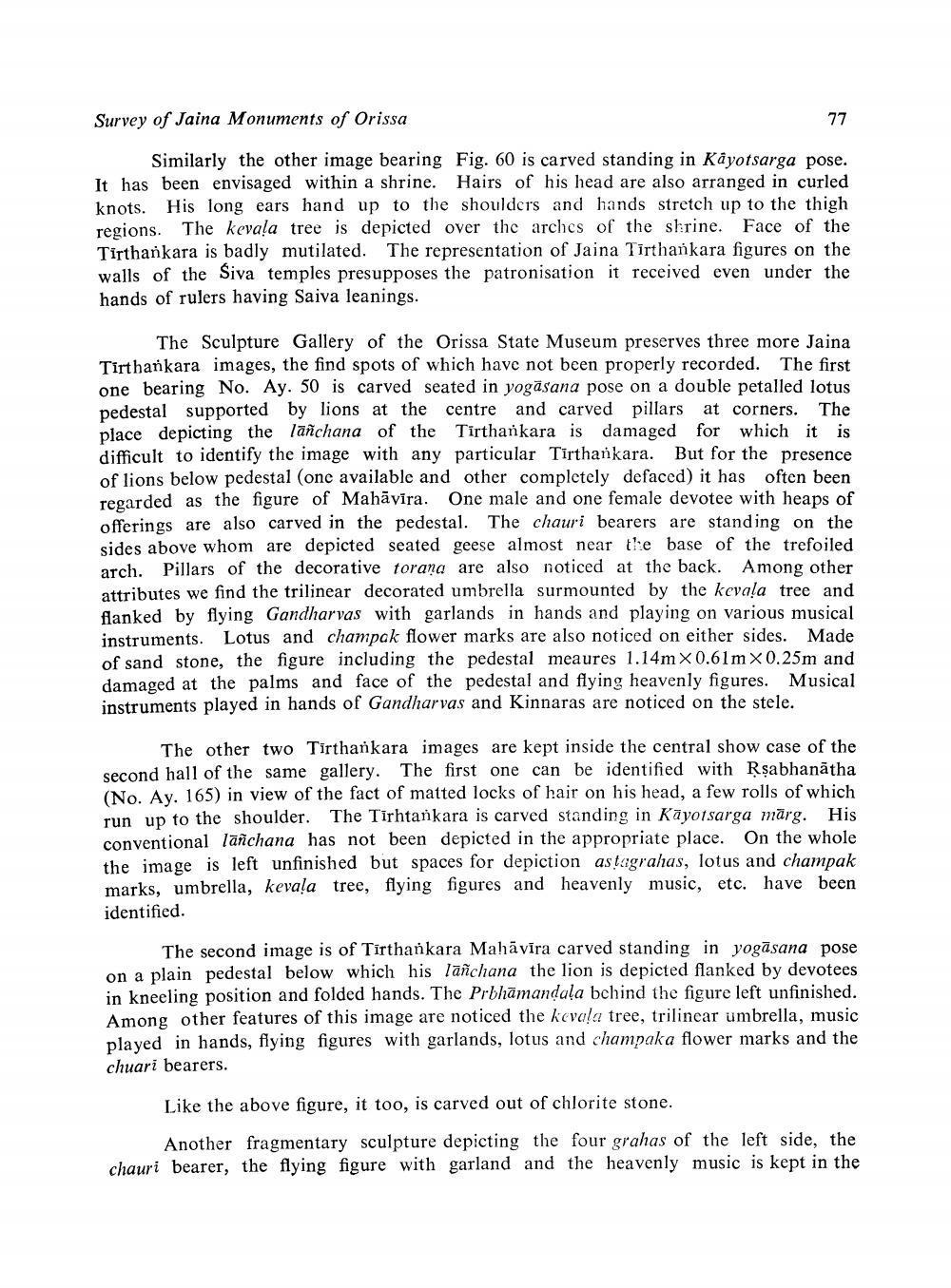________________
Survey of Jaina Monuments of Orissa
77
Similarly the other image bearing Fig. 60 is carved standing in Kâyotsarga pose. It has been envisaged within a shrine. Hairs of his head are also arranged in curled knots. His long ears hand up to the shoulders and hands stretch up to the thigh regions. The kevala tree is depicted over the arches of the shrine. Face of the Tirtharkara is badly mutilated. The representation of Jaina Tirthankara figures on the walls of the Siva temples presupposes the patronisation it received even under the hands of rulers having Saiva leanings.
The Sculpture Gallery of the Orissa State Museum preserves three more Jaina Tirthankara images, the find spots of which have not been properly recorded. The first one bearing No. Ay. 50 is carved seated in yogasana pose on a double petalled lotus pedestal supported by lions at the centre and carved pillars at corners. The place depicting the lañchana of the Tirthankara is damaged for which it is difficult to identify the image with any particular Tirthankara. But for the presence of lions below pedestal (one available and other completely defaced) it has often been regarded as the figure of Mahāvīra. One male and one female devotee with heaps of offerings are also carved in the pedestal. The chauri bearers are standing on the sides above whom are depicted seated geese almost near the base of the trefoiled arch. Pillars of the decorative torana are also noticed at the back. Among other attributes we find the trilinear decorated umbrella surmounted by the kevala tree and flanked by flying Gandharvas with garlands in hands and playing on various musical instruments. Lotus and champak flower marks are also noticed on either sides. Made of sand stone, the figure including the pedestal meaures 1.14m x 0.61m x 0.25m and damaged at the palms and face of the pedestal and flying heavenly figures. Musical instruments played in hands of Gandharvas and Kinnaras are noticed on the stele.
The other two Tirthankara images are kept inside the central show case of the second hall of the same gallery. The first one can be identified with Rsabhanātha (No. Ay. 165) in view of the fact of matted locks of hair on his head, a few rolls of which run up to the shoulder. The Tirhtankara is carved standing in Kāyotsarga mārg. His conventional lāñchana has not been depicted in the appropriate place. On the whole the image is left unfinished but spaces for depiction astagrahas, lotus and champak marks, umbrella, kevala tree, flying figures and heavenly music, etc. have been identified.
The second image is of Tirthankara Mahāvīra carved standing in yogāsana pose on a plain pedestal below which his lañchana the lion is depicted flanked by devotees in kneeling position and folded hands. The Prbhāmandala behind the figure left unfinished. Among other features of this image are noticed the kevala tree, trilincar umbrella, music played in hands, flying figures with garlands, lotus and champaka flower marks and the chuari bearers.
Like the above figure, it too, is carved out of chlorite stone.
Another fragmentary sculpture depicting the four grahas of the left side, the chauri bearer, the flying figure with garland and the heavenly music is kept in the




